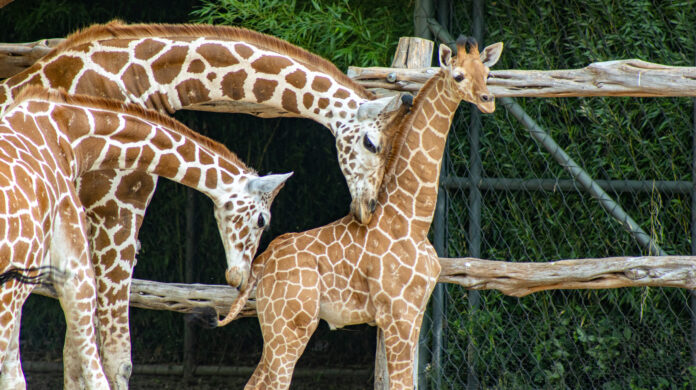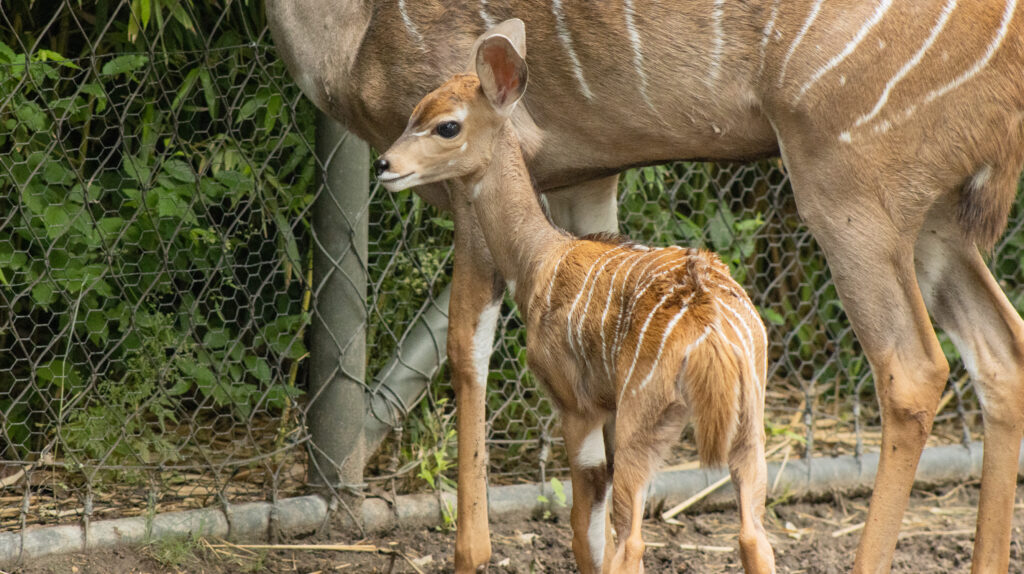After an open call for name suggestions for the Fort Worth Zoo’s newest giraffe calf on its social media pages, the Zoo narrowed down the nearly 500 responses to five contenders and invited the public to vote on their favorite name:
- Lucchese – a Texas boot brand; we do live in Cowtown, after all!
- Jabali – meaning “strong as a rock” in Swahili
- Mwezi – “moon” in Swahili, because the tallest land mammals reach high in the sky
- Hickory – standing as tall as this Texas tree
- Thor – a superhero name for his super-large size
The Zoo received more than 8,000 votes and an overwhelming majority selected Lucchese! As an iconic Texas boot brand, it fits the newest calf in Cowtown well. How does the saying go? “If the shoe fits!”
Lucchese was born May 7 to parents Kala and Walter. The calf was born weighing 174 pounds and standing more than 6 feet tall. This is Kala’s seventh calf and Walter’s first. The Fort Worth Zoo houses reticulated giraffes, a name that describes the mammal’s chestnut-brown rectangular markings. Like human fingerprints, each giraffe pattern is different. Native to the African savannas, a giraffe’s most distinguishing feature is its long neck, which can account for 7 feet of its height. Lucchese brings the Zoo’s herd to nine.
Lucchese took his first strides in the African Savanna on June 14 with the rest of the herd.
There’s another new baby out in the Savanna. Peaches, the lesser kudu calf, was born May 5 to parents Umbrella and Martini. The lesser kudu is an African hoofstock species characterized by its coat consisting of one white line down its back with 11 to 14 stripes branching off. This pattern helps camouflage the kudu in the brush where it lives. The lesser kudu’s large ears capture and funnel sound, which makes it easier for the animal to hear approaching predators. Peaches’ ears are definitely easy to see! She’s sticking pretty close to mom for now, but guests can see both babies romp in the African Savanna on their next visit to the Zoo.






